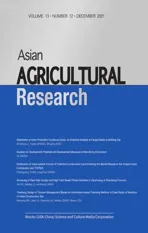Screening of New High Quality and High Yield Sweet Potato Varieties in Zaozhuang of Shandong Province
2021-02-18JieXUJialiangLIJunchangLIANG
Jie XU, Jialiang LI, Junchang LIANG
Zaozhuang Academy of Agricultural Sciences, Zaozhuang 277800, China
Abstract [Objectives] To compare the growth period, dry matter content and yield of 12 different sweet potato varieties, so as to screen out new sweet potato varieties with high yield, high quality and high dry matter content suitable for cultivation in Zaozhuang of Shandong Province. [Methods] Field random arrangement, three replicates, and field observation were adopted, and data were surveyed and summarized. [Results] There were significant differences in the maturity period between varieties. Longshu 9, Hongxiangjiao, Sushu 8, Yanshu 25, and Yanshu 0747 in the fresh eating group were mature earlier, and Yuzi 7 was mature later; Xushu 32 in the starch group was mature earlier, while Xushu 22 (ck), Shangshu 19, Jishu 25, and Jishu 98 had moderate maturity period, and Jixu 23 was mature later. The difference in the yield between the fresh eating group and the starch group reached a very significant level. In the fresh eating group, Yanshu 25 had the highest yield, followed by Longshu 9, and then Yanshu 0747; in the starch group, Jishu 98 had the highest yield, followed by Shangshu 19, and then Jixu 23. Besides, there were significant differences in the dry matter content between varieties. In the fresh eating group, Yuzi 7 had the highest dry matter content (30.4%), followed by Yanshu 25 (28.1%), and then Yanshu 0747 (28.1%); in the starch group, Xushu 32 had the highest dry matter content (33.6%), followed by Jishu 25 (32%), and then Jishu 98 (31.5%). [Conclusions] Combining the maturity period, yield, dry matter content, appearance, taste and unique ecological conditions in Zaozhuang area, the varieties suitable for cultivation in Zaozhuang area were screened: in the fresh eating group, it was Yanshu 25 and Longshu 9; in the starch group, it was Jishu 98, Shangshu 19,and Jixu 23.
Key words Sweet potato, Dry matter content, High quality and high yield, Screening
1 Introduction
The cultivation area of sweet potato in Zaozhuang of Shandong Province is mainly concentrated in Shanting District of Zaozhuang City, and also distributed in Yicheng, Shizhong, Taierzhuang, and Xuecheng. The cultivation area is exceeding 10 000 ha. The cultivation area of sweet potato in Shanting District is mainly concentrated in production areas such as Xuzhuang Town, Dianzi Town, and Sangcun Town where the production is relatively concentrated, about 40% sweet potato varieties are high starch varieties, and 60% are fresh eating varieties. Most of the farmers cultivate old varieties of sweet potatoes, such as Xushu 18, Xushu 19, Beijing 553, Xinong 431, Laifu 1,etc.
, which severely restricted the development of the sweet potato industry in Zaozhuang. In 2017, through the survey of new varieties of sweet potato, Zaozhuang Academy of Agricultural Sciences screened out new varieties with high yield, high quality and high dry matter content suitable for cultivation in Zaozhuang. This provided variety resources for sweet potato growers and variety support for the development of sweet potato industry in Zaozhuang area, and also promoted the development of sweet potato storage and processing industry in Zaozhuang area.2 Materials and methods
2.1 Materials
In the experiment, we selected a total of 12 varieties, including 6 in the fresh eating group, namely Longshu 9, Hongxiangjiao, Sushu 8, Yanshu 25, Yuzi 7, and Yanshu 0747; 6 in the starch group, namely: Xushu 22 (ck), Xushu 32, Shangshu 19, Jixu 23, Jishu 25 and Jishu 98.2.2 Methods
The field distribution was according to the fresh eating group and starch group. Two independent experiments were arranged, and each experiment was designed with 6 treatments. Xushu 22 was taken as the control variety. The plot area was 20 m(4 m × 5 m, namely, 5-row plot, row length 5 m). The complete blocked randomization was adopted, and 3 replicates were performed. The field planting was carried out on May 16, with a row spacing of 80 cm and a plant spacing of 25 cm. sweet potatoes were harvested on November 6, all plots were harvested, and the fresh weight of root tuber was weighed. The dry matter content was measured within 7 d after harvest. Repeatedly took the medium-sized storage root (not less than 500 g for sampling) of each variety, and baked them to constant weight at 80 °C to calculate the dry matter content. A group of 5 people was formed to evaluate the quality: the appearance quality was scored according to the flesh color, storage root shape, storage root size, root uniformity, and market acceptance. The full score is 100 points, 5 points are one level, and the appearance quality of Xushu 22 product was uniformly scored as 70 points; the food quality was scored in accordance with the taste after cooking, the full score is 100 points, 5 points are one level, and the food quality of Xushu 22 was uniformly scored as 70 points. The field distribution of the experiments is shown in Table 1-2.
Table 1 Field arrangement for comparison experiment of fresh-eating varieties

Table 2 Field arrangement for comparison experiment of starch type varieties
2.3 Field management and main weather conditions
2.3.1
Field management. The field planting was carried out on May 16. The experiment was performed at the experimental field of the Zaozhuang Academy of Agricultural Sciences. The soil was mortar black soil, and the previous crop was maize. The soil pH was 6.14, organic matter 18.18 g/kg, alkali hydrolyzed nitrogen was 69.70 mg/kg, available phosphorus was 45.59 mg/kg, available potassium was 205.16 mg/kg, exchangeable calcium was 3.27 g/kg, and exchangeable magnesium was 0.24 g/kg. At the time of field planting, 1.5 kg of compound fertilizer was applied to each plot, and no top dressing was required during the growth period. A total of 4 sprays of 4.5% Lambda-cypermethrin EC 1 000 times solution were applied to control various insect pests on August 10, August 21, September 18, and October 5 during the growth period. Weeded twice on May 17 and June 12, and seedlings were raised on August 13.2.3.2
Weather conditions during the growth period. The light hours from May to October were 270, 132.7, 181.7, 162.3, 106.6, and 176.5 h, which were slightly lower than that of the same period in normal years. The precipitation from May to October was 81.9, 82, 106.3, 84.9, 132.6 and 37 mm, respectively, which was slightly lower than that of the same period in normal years. The main precipitation during the growth period was as follows: moderate rain on May 24, heavy rain on June 1-2, moderate rain on June 9, moderate rain on June 14, 15, and 20, light rain on June 25, light rain on July 16, torrential rain on July 19, heavy rain on July 20, moderate rain on July 21, heavy rain on July 26, light rain on July 31, August 4 and 5, heavy rain, heavy rain on August 11, 23, and 24, moderate rain on September 2, 15, 16, 17, and 18, moderate rain on September 19, 20, and 21, heavy rain on September 28 and 20, and frost on November 3.3 Results and analysis
3.1 Fresh eating group
3.1.1
Comparison of biological characteristics. The comparison of biological characteristics of varieties in the fresh eating group is shown in Table 3.
Table 3 Comparison of biological characteristics of varieties in the fresh eating group
3.1.2
Growth and development process and growth status (Table 4). Table 4 showed that Yuzi 7 had relatively late maturity period and had spindly growth and was more resistant to diseases and insect pests. Other varieties had relatively early maturity period and had no spindly growth. Some varieties had mild diseases and insect pests.
Table 4 Growth and development process and growth status of varieties in the fresh eating group
3.1.3
Yield measurement (Table 5). Table 5 and variance analysis of the yield in Table 6 showed that the differences between the varieties in the fresh eating group reached an extremely significant level, and the differences between the replicates were not significant. The results in Table 5 showed that Yanshu 25 had the highest yield, followed by Longshu 9, and then Yanshu 0747. The differences between the three varieties reached a significant level. At the extremely significant level, Yanshu 25 was at the same level as Longshu 9, and there was no extremely significant difference between Longshu 9 and Yanshu 0747.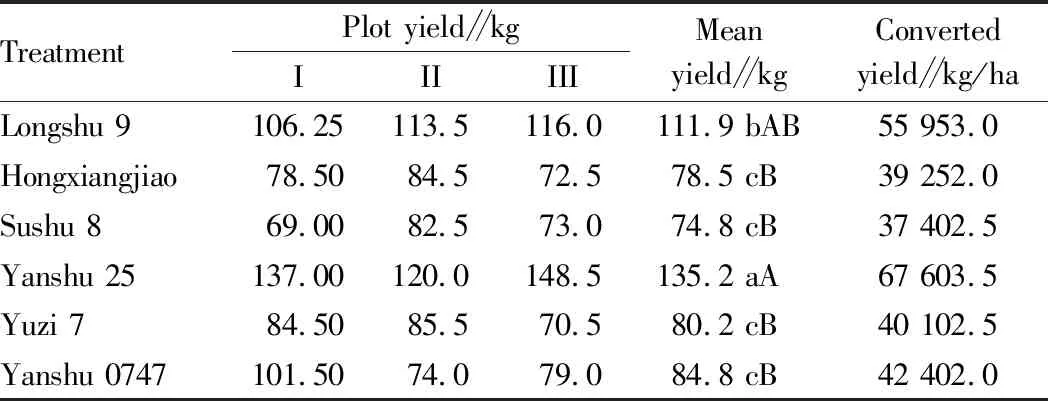
Table 5 Comparison of the yield of varieties in the fresh eating group

Table 6 Variance analysis of the yield
3.1.4
Quality determination. Table 7 showed that Longshu 9 had poor appearance and good taste, Hongxiangjiao and Sushu 8 had medium appearance and good taste, Yanshu 25 had good appearance and good taste, and Yuzi 7 and Yanshu 0747 had medium appearance and poor taste.3.1.5
Dry matter content determination. The dry matter content of varieties in the fresh eating group is shown in Table 8.As shown in Table 8-9, the differences between the varieties in the fresh eating group reached an extremely significant level, and the differences between the replicates were not significant. The results in Table 8 showed that Yuzi 7 had the highest dry matter content, followed by Yanshu 25, and then Yanshu 0747. The differences between the three varieties were at the same level but not significant.
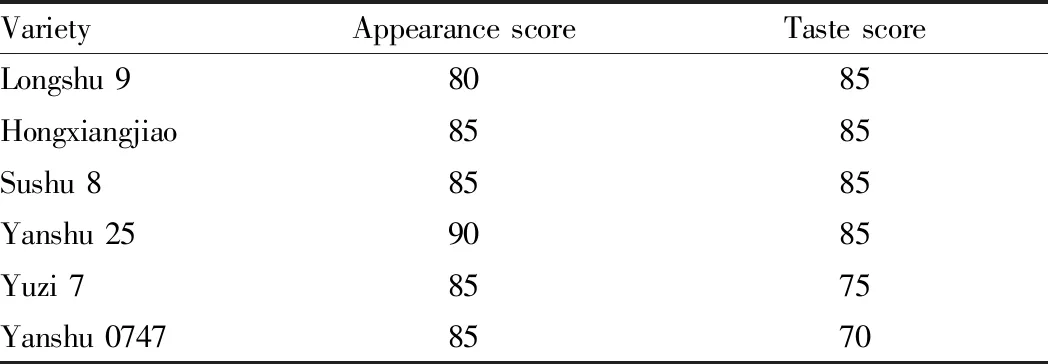
Table 7 Comparison of the quality of varieties in the fresh eating group
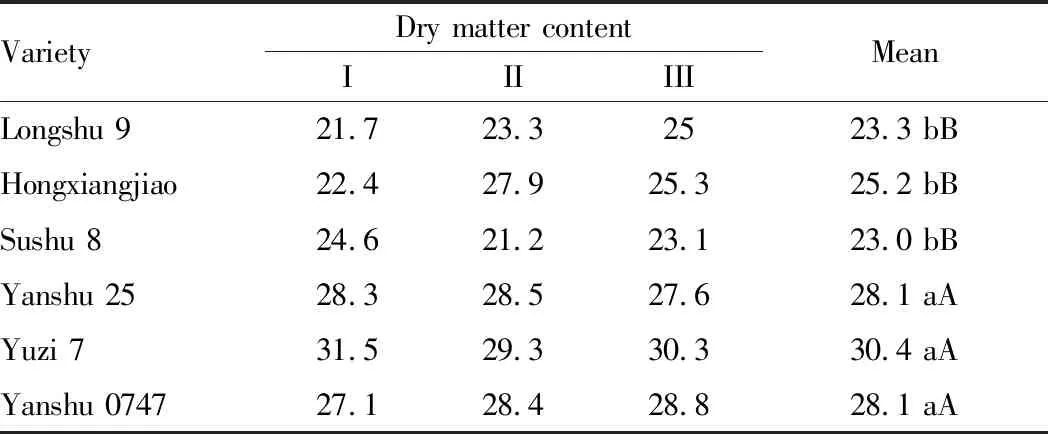
Table 8 Comparison of dry matter content of varieties in the fresh eating group

Table 9 Variance analysis of dry matter content
3.2 Starch group
3.2.1
Comparison of biological characteristics. The comparison of biological characteristics of varieties in the starch group is shown in Table 10.
Table 10 Comparison of biological characteristics of varieties in the starch group
3.2.2
Growth and development process and growth status (Table 11). Table 11 showed that Xushu 32 was mature earlier, Xushu 22 (ck), Shangshu 19, Jishu 25, Jishu 98 had medium maturity period, Jixu 23 was mature later, Xushu 32 had early senescence, and Xushu 22(ck) and Shangshu 19 had spindly growth.
Table 11 Growth and development process and growth status of varieties in the starch group
3.2.3
Yield measurement (Table 12). Table 12-13 showed that the differences between varieties in the starch group reached a very significant level, and the differences between the replicates were not significant. The results in Table 12 showed that Jishu 98 had the highest yield, followed by Shangshu 19, and then Jixu 23. The differences between the three varieties were at the same level but not significant.
Table 12 Comparison of the yield of varieties in the starch group

Table 13 Variance analysis of the yield of varieties in the starch group
3.2.4
Quality determination (Table 14). Table 14 showed that Shangshu 19 and Jishu 25 had good appearance and good taste, Jixu 23 had good appearance and poor taste, Xushu 32 had good taste and poor appearance, and Jishu 98 had medium taste and poor appearance.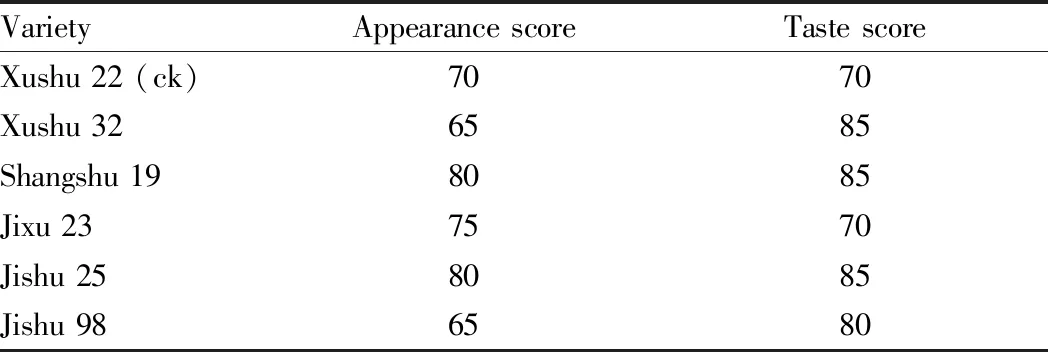
Table 14 Comparison of quality of varieties in the starch group
3.2.5
Dry matter content determination (Table 15). Table 15 and Table 16 showed that the differences between the varieties of starch group were not very significant, and the differences between the replicates were not significant. The results in Table 15 showed that Xushu 32 had the highest dry matter content, followed by Jishu 25, and then Jishu 98. There was no significant difference between the three varieties.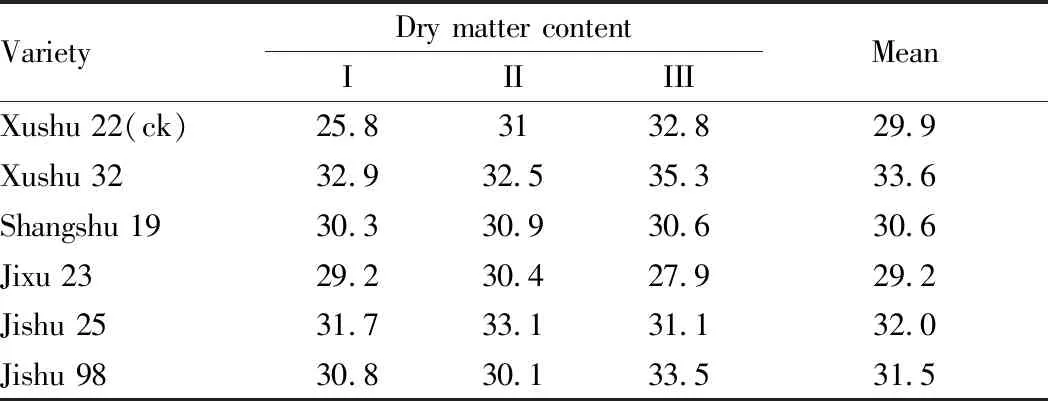
Table 15 Comparison of dry matter content of varieties in the starch group

Table 16 Variance analysis of dry matter content
4 Conclusions
In this experiment, through comprehensive analysis of the biological characteristics, yield, quality, dry matter content, and taste of different varieties of sweet potatoes, we screened two fresh eating varieties and three starch varieties suitable for planting in Zaozhuang area. Fresh eating varieties are Yanshu 25 and Longshu 9. Three starch varieties are Jishu 98, Shangshu 19, and Jixu 23. These five varieties have comprehensive traits, high yield, high quality, high dry matter content, and high market acceptance. Their main traits and yield are as follows:
Yanshu 25: Light red skin, yellow flesh, elliptic storage root, moderate storage root, appearance quality score 90 points, taste score 95 points, yield 67 603.5 kg/ha, dry matter content 28.1%, the best fresh eating variety, and high market acceptance.
Longshu 9: Light red skin, orange flesh, short elliptic storage root, big storage root, appearance quality score 80 points, taste score 90 points, yield 55 953 kg/ha, dry matter content 23.3%, can be promoted as a fresh eating variety.
Jishu 98: Deep red skin, light yellow flesh, elliptic storage root, big storage root, appearance quality score 65 points, taste score 80 points, yield 45 652.5 kg/ha, dry matter content 31.5%, suitable for promotion in Zaozhuang area as a starch variety.
Shangshu 19: Deep red skin, white flesh, elliptic storage root, big storage root, appearance quality score 80 points, taste score 85 points, yield 45 252 kg/ha, dry matter content 30.6%, suitable for planting as a starch (or fresh eating) variety.
Jixu 23: Light red skin, light yellow flesh, elliptic storage root, moderate storage root, appearance quality score 75 points, taste 70 points, yield 42 601.5 kg/ha, dry matter content 29.2%, suitable for planting as a starch variety.
杂志排行
Asian Agricultural Research的其它文章
- Effects of Fermented Nano Chinese Herbal Medicines Replacing Antibiotics on Production Performance and Carcass Quality of Growing-Finishing Pigs
- Research on the Curriculum Construction by Promoting Teaching Using Competition Based on Bloom’s Taxonomy of Educational Objectives
- Agricultural Water Resources Utilization and Management under Agricultural Safety Aim Based on Fuzzy Neural Network Algorithm
- Distribution of Value-added Income of Collective Construction Land Entering the Market Based on the Subject Input Contribution and TOPSIS
- Optimization of Structure of Agricultural Insurance Subsidies: A Multi-task Principal Agent Model
- Analysis on Development Potential and Development Measures of Nanchong Ecotourism
